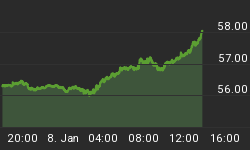Questions on negative rates keep coming in: Where does the money go? Who benefits? Will the Fed do the same? What's Draghi up to?
A quick refresher course on paying interest on excess reserves vs. charging interest on excess reserves is in order.
Q: Who has negative rates?
A: The European Central Bank (ECB), Sveriges Riksbank in Sweden, the Swiss National Bank (SNB), the Bank of Japan (BoJ), and Denmark's Danmarks Nationalbank (DN) all have negative rates.
Q: Negative rates on what?
A: The above five countries have negative rates on "excess reserves". Switzerland also has negative rates on deposits. Most banks are reluctant to put negative rates on deposits fearing bank runs and currency hoarding.
Q: How much are we talking about?
A: Bloomberg Quick Take notes "more than $7 trillion of government bonds worldwide offer yields below zero."
Q: How do excess reserves come into play?
A: Central banks create them through monetary actions like repos and QE hoping to get credit flowing.
Think of it this way: money is printed into existence even though there are no creditworthy borrowers who want loans.
The irony is banks cannot lend excess reserves. Money lent by one bank will simply appear as excess reserves when the money is deposited elsewhere. Mathematically, someone has to hold every cent of money created by central banks.
Q: Who collects the money?
A: If the central bank charges money on excess reserves, the central bank collects the money. In general, bondholders pay money to hold bonds with negative rates. Borrowers get paid to borrow. Yes, this is absurd.
Q: Who benefits from low and negative rates?
A: Asset holders benefit from cheap money, at least initially. Asset prices went through the roof when ECB president Mario Draghi issued his famous "Whatever it Takes" speech on July 26, 2012. Various rounds of QE by the Fed also sent the stock market higher. The obvious consequence is easy to explain: asset bubbles break, leaving banks and borrowers in worse shape.
Q: Is there a limit to negative rates and resultant bubbles?
A: There is always a limit. Everyone is guessing where it is. At some point the greater fools run out or the consequences are such that policies are abandoned. It's possible we hit the limit today (March 10, 2016), given the strong reversal following ECB announcements by Draghi, initially interpreted to be a huge bazooka. As it appears now, the bazooka backfired. See Draghi's "Shock and Awe" campaign morphs into "Shock and Aw Shucks" for further discussion.
Q: Why doesn't the Fed resort to negative rates?
A: Given negative rates have proven to be of negative benefit, why would the Fed want to? However, central banks don't see in those terms. Here are a couple of reasons I presume the Fed does understand:
- Negative rates hurt bank profits.
- The Fed pays interest on excess deposits. This is a back-door, free-money handout to banks that everyone ought to be protesting. Over time, the Fed has bailed out the banks in numerous ways.
- The US has numerous money market funds that would immediately be destroyed if the Fed implemented negative rates.
Money market funds are not in vogue in the Eurozone as they are here. Banks can always raise other fees to mask negative deposit rates. Money market funds cannot do the same.
Q: If negative rates hurt bank profits, why has Europe and Japan embraced them?
A: I suspect Draghi believes asset bubbles and equity support will do more for the Eurozone than lost bank profits. Given the collapse of economic bubbles is very damaging, Draghi is very wrong.
Never underestimate the propensity for central bank stupidity.
















